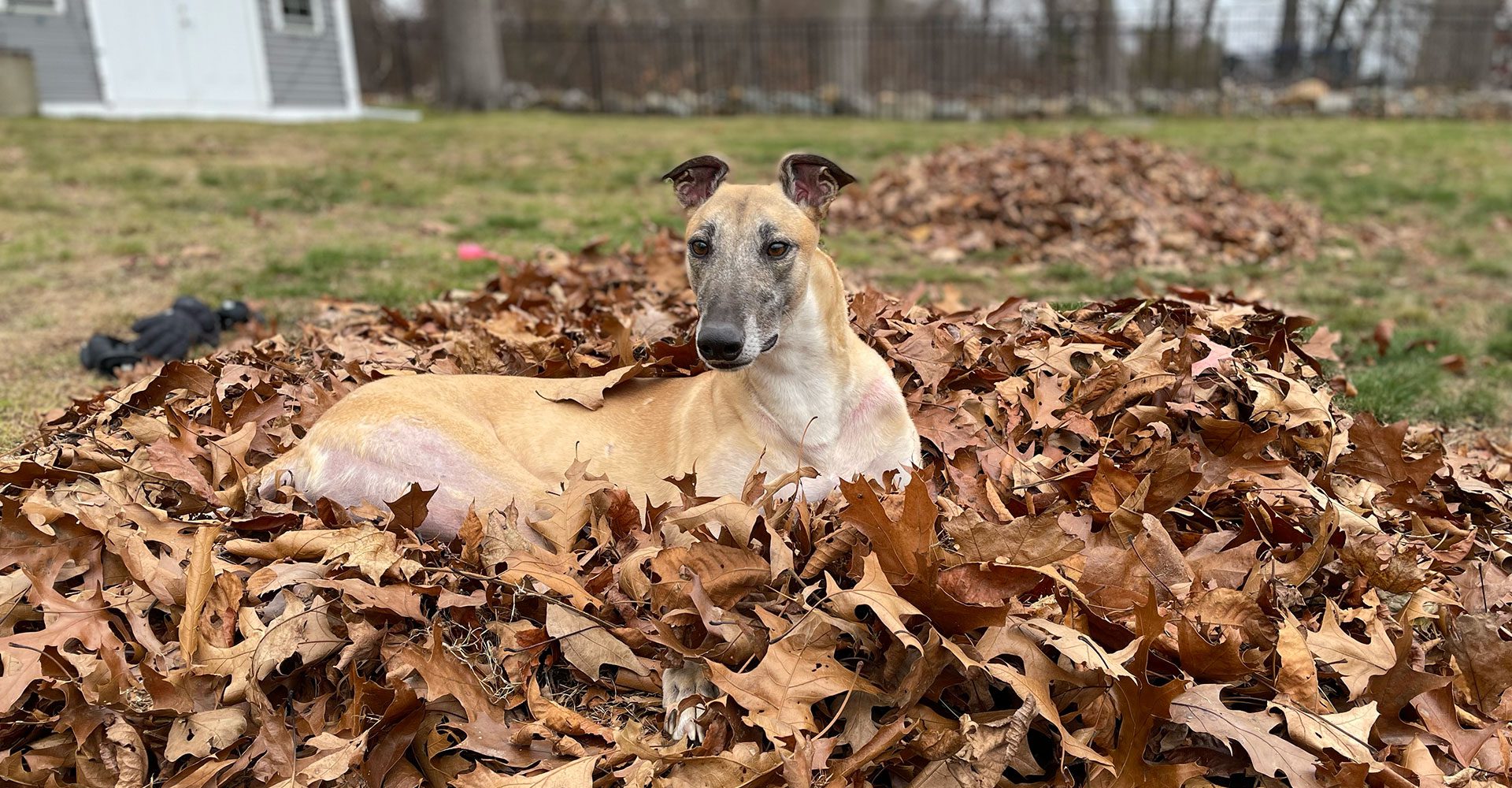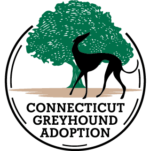
CT Greyhound Adoption (CGA) Foster Program Guidelines
Ownership of foster greyhounds
All foster greyhounds are the sole property of CGA and shall be returned to CGA upon request, or if the foster parent is not able to adequately care for the greyhound.
Foster supplies
The foster parent will be given food, bowl, crate, muzzle, collar, ID tag and lead. Frontline and wormer/heartworm medication will be given at time of foster dog pick-up.
Health treatment
Foster greyhounds are not to be treated by unauthorized veterinarians. Expenses resulting from unauthorized routine care will be the responsibility of the foster parent. You must contact the foster coordinator/adoption coordinator for authorization. CGA will reimburse the foster parent for emergency care, however the foster coordinator must be contacted prior to seeking emergency treatment if possible or as soon as possible thereafter.
ID tags
Make sure your foster wears his or her greyhound collar and CGA ID tag at all times. Should your foster dog get loose, contact CGA immediately.
Muzzles
Always muzzle your dogs and the foster when turning them out. In addition, when riding in the car, all dogs should be muzzled
Help with the placement and adoption process/special events
Foster parents play an important role in the placement and adoption process and may be asked to provide information and attend special events so that the foster dog gets the exposure necessary to be adopted in a timely manner. Meet and Greets and Hound Hikes are scheduled through the state each month and foster parents are strongly encouraged to attend. Special one time CGA events are also scheduled throughout the year and foster parents are expected to bring the foster dog or make arrangements for a CGA volunteer to pick-up the dog and deliver to and from the events.
Adoption Flow
Foster parents must forward any interested adopters through the adoption process. The adoption process begins when the potential adopter fills out a CGA adoption application (included on CGA’s website). The adoption coordinator speaks to the applicant and determines their viability for adopting a greyhound. A home visit is scheduled by an adoption rep and vet references are checked. Once an adopter is approved, the adoption coordinator will forward a contract to the foster home and will look to the foster parent to complete the required information and sign as the authorized CGA representative. The foster dog will go to their forever home with their collar, CGA ID tag and medical paperwork which will be given to the foster parent at the time of foster dog pick-up. All other supplies (i.e. leash, crate, food, meds, bowls, etc.) must be returned to the foster coordinator ASAP.
The Many Roles of a Foster Parent
In order to avoid potential problems in your home and to make the foster dog’s transition to his “Forever Home” go more smoothly, we request that you follow the additional guidelines below:
- To lessen the new-dog tension, exercise your foster daily … a tired dog is a happy dog!!!
- Expose him slowly to all sorts of new situations, sounds and other animals. Please note if he’s thunder-phobic.
- Socialize your foster dog: take the dog out where you will encounter other adults, children and other dogs.
- Take your Foster Dog to Meet & Greets, Hound Hikes and CGA events scheduled through the year.
- Teach manners. Discourage jumping up, counter surfing, stealing food, etc.
- Crate your foster dog when it is not supervised. If the dog sleeps with you in the bedroom at night, a crate is not needed. However, if there are other pets in the bedroom, you should consider a muzzle.
- Work on housebreaking and learning about houses, steps, sliding-glass doors, household appliances, etc.
- Never leave your foster alone around other pets or small children- muzzle or crate.
- Always muzzle your dogs & the foster when turning them out in the yard or traveling in a car.
- If you have the opportunity, give the foster a bath. So he gets use to being touched, clean out his ears; play with his feet; trim his nails.
- Get him used to gentle handling by examining him for ticks, injuries, etc.
- Place your hands on the dog whenever possible.
- Do not allow the foster on your bed, couch or other furniture- it could create real problems in the “Forever Home”. It also lessens conflicts with your own dogs if they are allowed on the furniture.
- Do not allow children to touch or hug foster dogs while laying on their dog beds or sleeping.
- Plan some absences so that your foster can experience time alone in the house. Use a Kong if the dog expresses separation issues.
- Feed fosters last – this helps maintain pack order with your own dog(s).
- The foster dog WILL test their position in your pack. Be aware & alert! Use muzzles, crates and caution.
- Take your foster for rides in the car. A trip to a Petco is always great fun and a good learning experience.
- Help with the final adoption by coordinating a meeting with a potential adopter once an application and home visit are completed by CGA rep.
- Above all, HAVE A GREAT TIME and enjoy your foster dog!!!!
